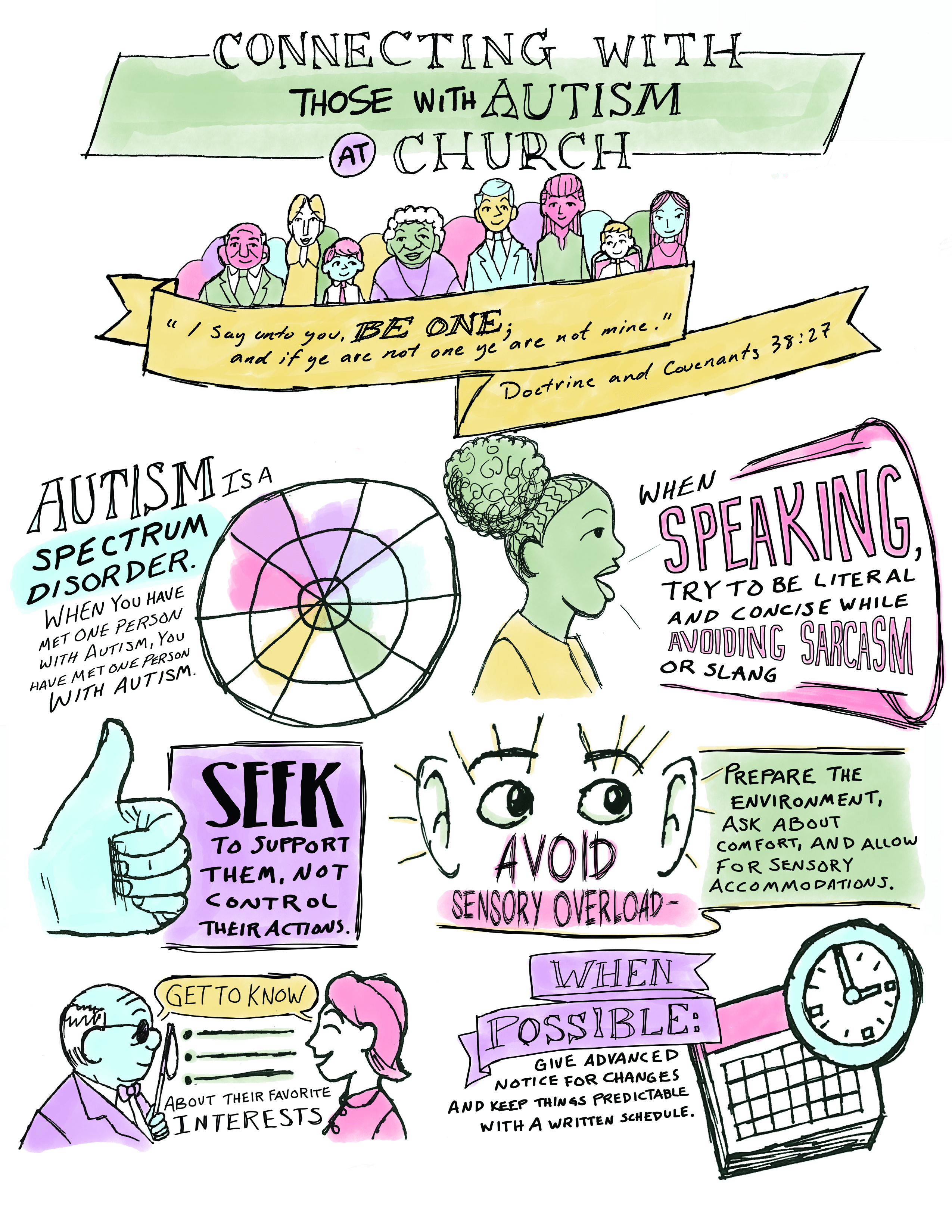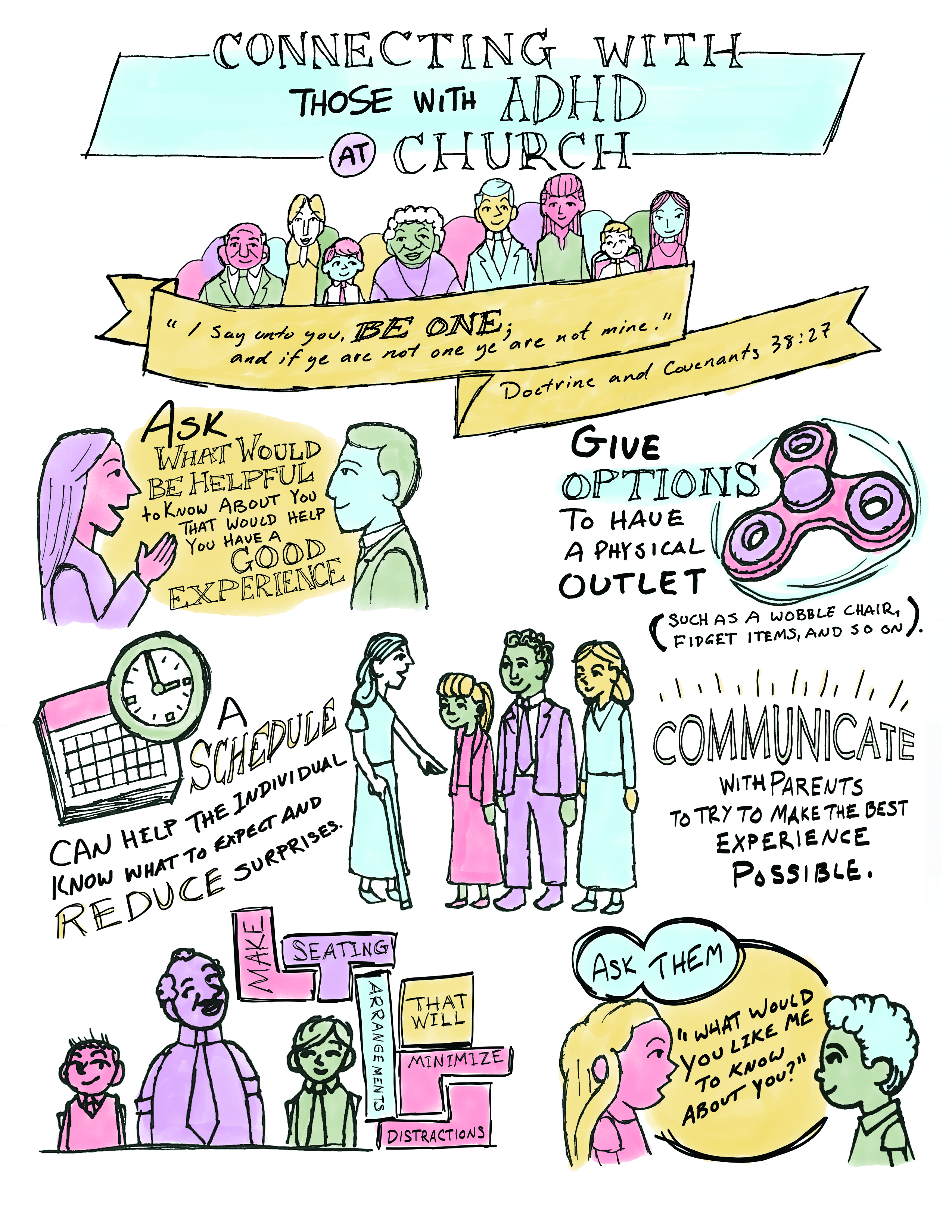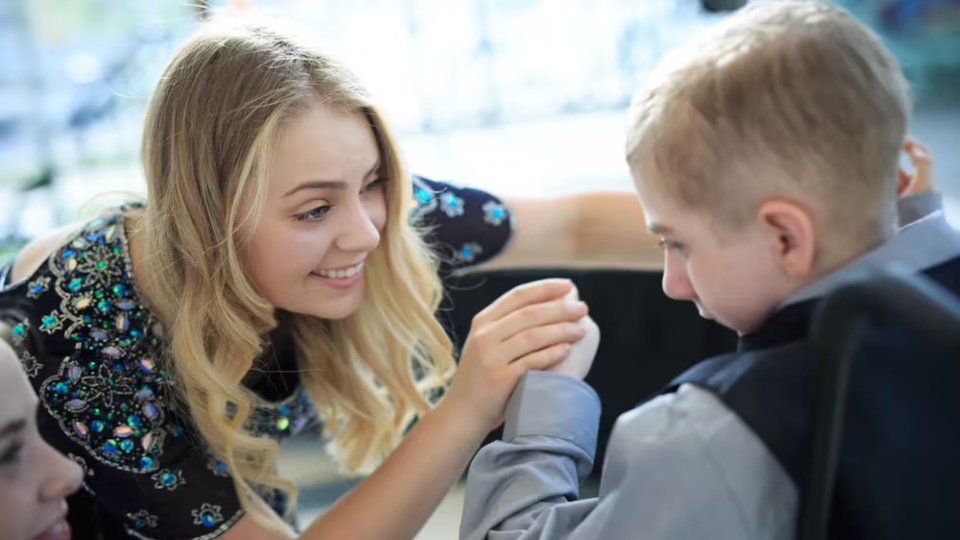
Children-Disabilities-5.jpg
A woman helps a young boy. According to the Church’s website, the role of stake and congregation disability specialists is “to help facilitate increased participation and inclusion of Church members with disabilities.”2025 by Intellectual Reserve, Inc. All rights reserved.This story appears here courtesy of TheChurchNews.com. It is not for use by other media.
By Aimee Cobabe, Church News
Makell and Orion Burgoyne have seen firsthand how simple, thoughtful acts by others can make a huge difference in church being a welcoming place for their family.
Of their seven children, two have disabilities. Five-year-old daughter Marcy has spinal muscular atrophy, a genetic condition that makes it difficult to walk, especially up stairs. One recent act that touched the Burgoynes’ hearts was when the Primary presidency in their ward made sure Marcy’s class met on the main level of the meetinghouse, to avoid stairs.
“Just that small thoughtful thing was so big,” Makell Burgoyne said. “It was big for me, it was big for Orion, it was big for Marcy.”
The Burgoynes’ youngest child, 4-year-old Rudy, has Rubinstein-Taybi syndrome, a rare genetic condition that has caused both intellectual and developmental delays.
Orion Burgoyne said he’s been surprised by how often people at church will go out of their way to include Rudy.
“We keep finding time and time again where beautiful, kind people say, ‘You know what, I know how to make this work for Rudy, I know how to make this work for Marcy,’” Orion Burgoyne said. “And that has been a level of kindness that we never expected.”
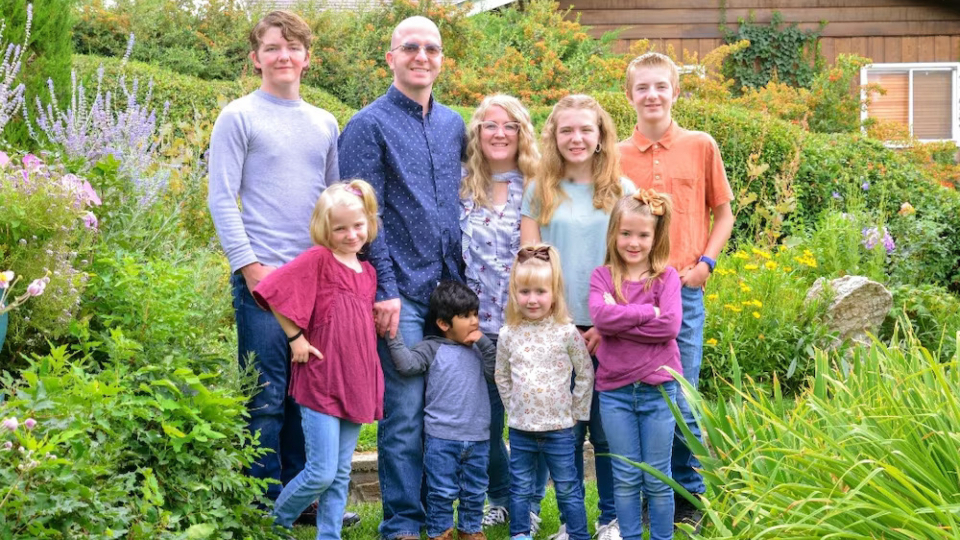
Children-Disabilities-2.jpg
The Burgoyne family poses for a family portrait. Photo provided by Makell Burgoyne, courtesy of Church News.All rights reserved.Makell Burgoyne said they have experienced judgment in the past, such as when Rudy makes noise during sacrament meetings, but in their current ward, the Centerville 1st Ward in the Centerville Utah South Stake of The Church of Jesus Christ of Latter-day Saints, that’s never been a problem.
“There’s a part of me that wonders if so many parents in this ward have taught their kids that kids with special needs are just as important and beautiful and special,” Makell Burgoyne said. “But I think that’s so crucial, to teach your kids to love everyone.”
Communication
According to Katie Edna Steed, who works as a disability specialist manager in the Church’s Priesthood and Family Department, about 20% of the world’s population has a disability. That includes invisible disabilities.
Talking to parents about their children’s individual needs, including asking questions, is one of the best ways to start supporting those families, according to Steed.
For example, Steed said, a Young Women leader could simply ask parents of a teen girl with a disability, “What would you like me to know about your daughter?” or “Help me understand what we can do to make church an even better experience.”
“There are ways we can say it that allows them the freedom to share what they feel comfortable sharing,” she said.
Steed’s own family has been blessed by the work of a ward disability specialist helping her son with autism. Steed said the specialist asked how the ward Christmas party could be more enjoyable for her son.
“And I said it would be great if just a few people in the ward would be willing to take five minutes of that party time and talk to him about ‘Star Wars,’ because that’s what matters to him,” Steed said.
Sometimes the ways to help someone with disabilities could be obvious, like installing a ramp or an accessible bathroom. But Steed said the most important thing is to listen.
“With those more invisible disabilities like autism, … if they’re taking the time to share it with you, it’s a very real thing for them,” Steed said.
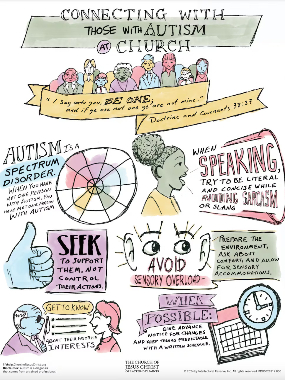
Children-Disabilities-3.jpg
An infographic gives ideas on how to connect at church with people who have autism.2025 by Intellectual Reserve, Inc. All rights reserved.The Church website at disability.ChurchofJesusChrist.org and the “Life Help” section in the Gospel Library app have helpful guidelines for individuals, parents, leaders, teachers and those called as disability specialists. There are also videos and infographics to understand those with invisible disabilities like anxiety, ADHD or autism. One 10-part video series titled “Teaching Strategies for Children With Disabilities” features strategies to engage children with disabilities.
Steed said she’s seen many examples of ward members helping others make accommodations to more fully participate in church worship. She talked about a young man with cerebral palsy who used a walker and struggled to pass the sacrament; a man in the ward was a welder and made an attachment to the walker to allow the young man to pass the sacrament.
Steed has also seen the ability of youth in her ward to help her son. One young man will often sit next to her son and help him focus during sacrament meetings.
“They’re amazing,” she said. “And the things that they think of because they’re a peer are things I probably never would have thought of as a mom. But they’re figuring it out.”
Understanding
Steed acknowledges that having any kind of disability or special need can be a challenge for many people.
“I know that we live in a fallen world, and there will be times that are very difficult,” she said. “So I don’t want to make it sound like, ‘Well, do this and your ward will be perfect.’ There will be times that it will be a growing and challenging time.”
That is something Abby Carlson from the Smithville Lake Ward in the Liberty Missouri Stake has learned with her child. Her son has what she calls “profound autism.”
For many years she and her husband would take turns going to church with their other children so one parent could stay home with their son.
“Having a child with a disability is very isolating,” she wrote in an email. “It is also physically, emotionally and spiritually exhausting.”
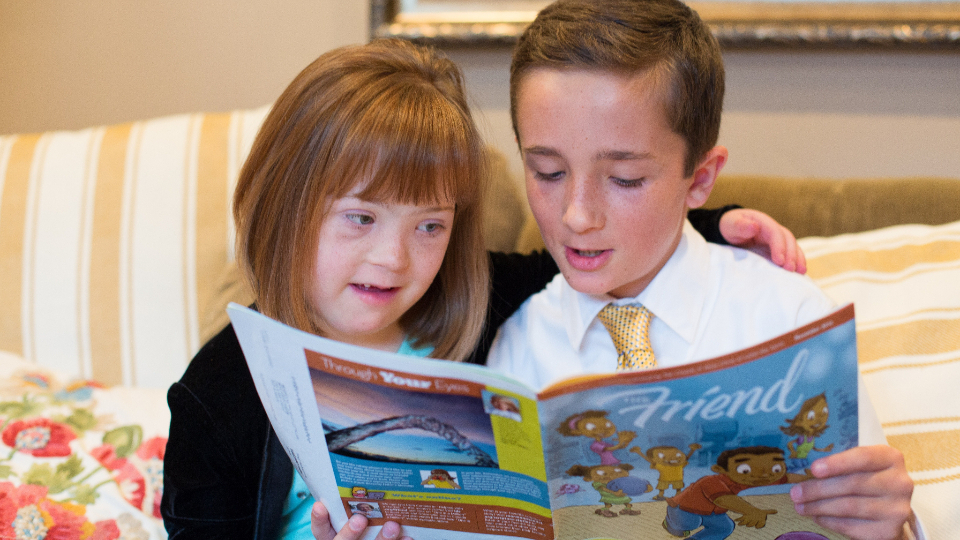
Children-Disabilities-4.jpeg
A young boy reads the Friend magazine with his sister.2025 by Intellectual Reserve, Inc. All rights reserved.Carlson is now working with a disability committee in her stake to create sensory rooms in two buildings in their stake, in addition to starting a caregiving support group and working to educate others in the area.
“Many people want to help those with challenges but don’t know what to do, and they don’t want to do something wrong, so they don’t do anything at all,” Carlson said.
Respect
Colleen and Charlie Fulks, in the Greenfield 3rd Ward, Chandler Arizona East Stake, have a son with the same Rubinstein-Taybi syndrome. He recently served a Church service mission, something the Fulks had not thought would be an option for him.
“There were just some sweet things that happened,” Colleen Fulks said. “Even though we were in the middle of COVID, there were blessings, and it affected our family in a really sweet way.”
The Fulks also help with a special needs activity program in their area, with 48 participants with disabilities — many of whom have severe disabilities that makes it difficult for them to attend youth activities in their own wards. About 90 other youth come to the activities to help as buddies.
Providing a place for all people, including those with disabilities, is what’s really important to Colleen Fulks.
“We all need that,” she said. “But when you have a disability, it makes it harder.”
Charlie Fulks said they have seen many participants and their youth buddies developing lasting friendships. So when someone new joins their group or is called as a disability specialist, he tells them to engage.
“Talk to them, treat them like you want them there,” he said.
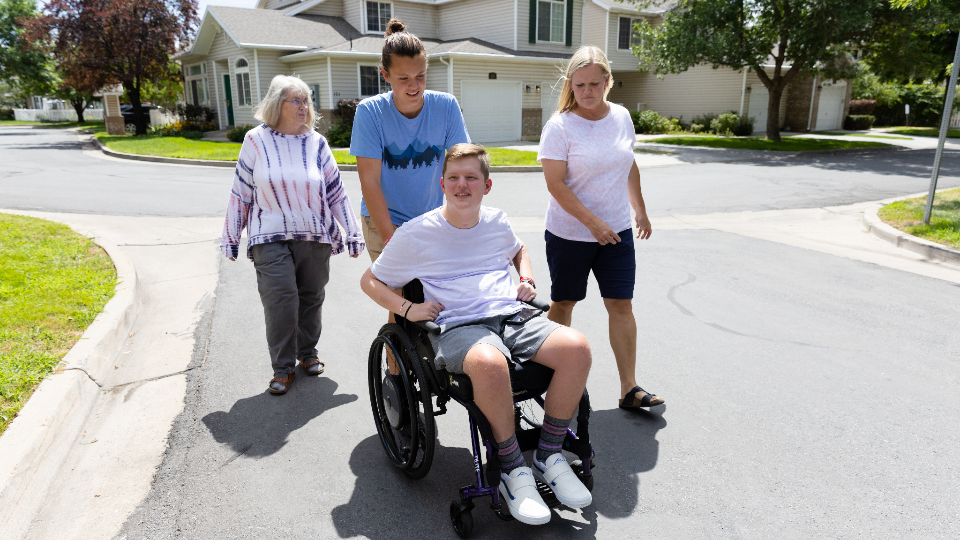
Children-Disabilities-1.jpeg
A young man rides in a wheelchair alongside his family.2025 by Intellectual Reserve, Inc. All rights reserved.Copyright 2025 Deseret News Publishing Company.
